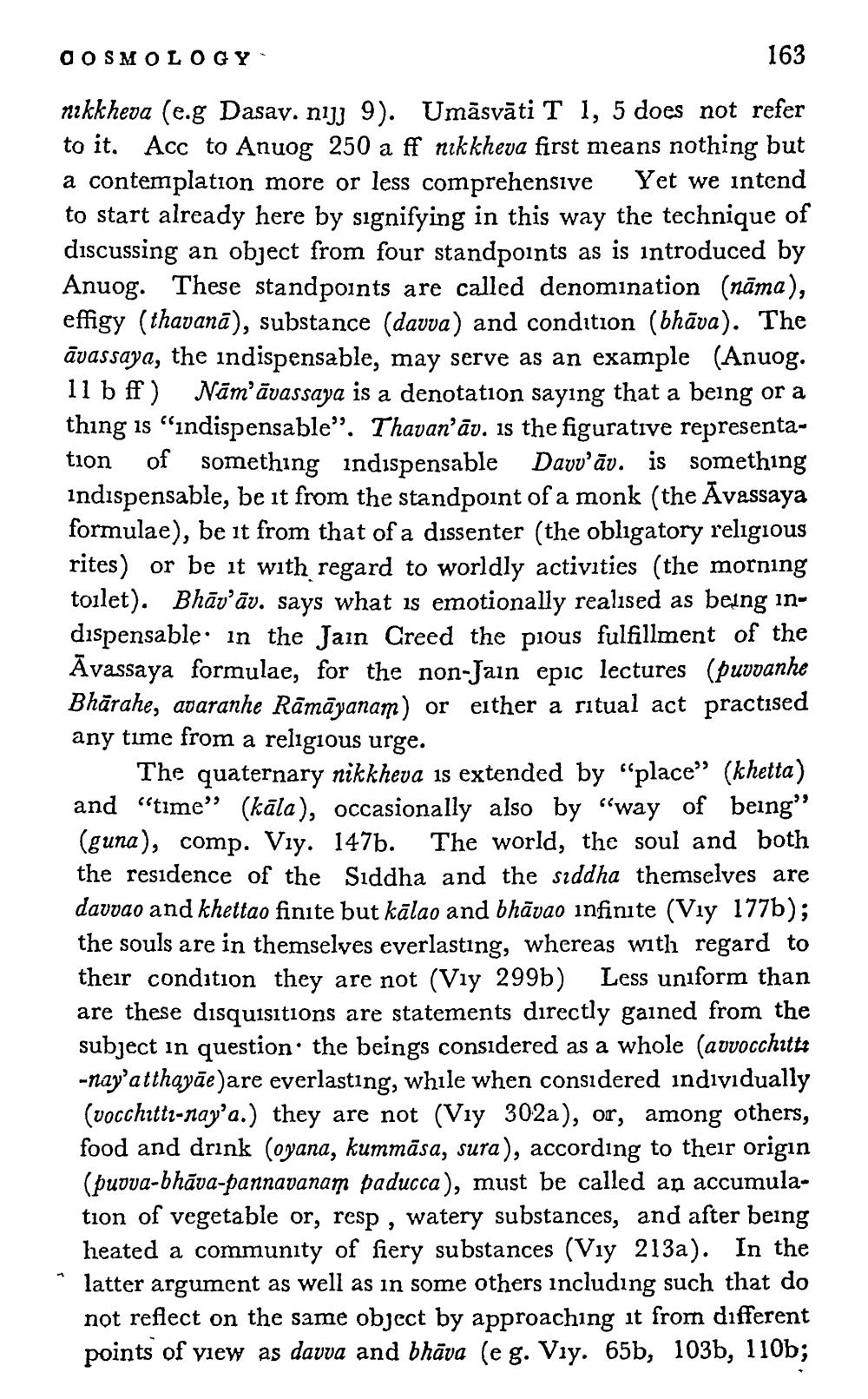________________
OOSMOLOGY
163
nikkheva (e.g Dasay. nijj 9). Umāsvāti T 1, 5 does not refer to it. Acc to Anuog 250 a ff nikkheva first means nothing but a contemplation more or less comprehensive Yet we intend to start already here by signifying in this way the technique of discussing an object from four standpoints as is introduced by Anuog. These standpoints are called denomination (nāma), effigy (thavanā), substance (davva) and condition (bhāva). The āvassaya, the indispensable, may serve as an example (Anuog. 11 b ff) Nām'āvassaya is a denotation saying that a being or a thing is "indispensable". Thavan'āv. is the figurative representation of something indispensable Davv'āv. is something indispensable, be it from the standpoint of a monk (the Āvassaya formulae), be it from that of a dissenter (the obligatory religious rites) or be it with regard to worldly activities (the morning toilet). Bhāv’āv. says what is emotionally realised as being indispensable in the Jain Creed the pious fulfillment of the Āvassaya formulae, for the non-Jain epic lectures (puvvanhe Bhārahe, avaranhe Rāmāyanam) or either a ritual act practised any time from a religious urge.
The quaternary nikkheva is extended by "place" (khetta) and "time" (kāla), occasionally also by way of being" (guna), comp. Viy. 147b. The world, the soul and both the residence of the Siddha and the siddha themselves are davvao and khettao finite but kālao and bhāvao infinite (Vıy 177b); the souls are in themselves everlasting, whereas with regard to their condition they are not (Vıy 299b) Less uniform than are these disquisitions are statements directly gained from the subject in question the beings considered as a whole (avvocchitte -nay'atthayāe)are everlasting, while when considered individually (vocchitti-nay'a.) they are not (Viy 302a), or, among others, food and drink (oyana, kummāsa, sura), according to their origin (pudva-bhāva-pannavanam paducca), must be called an accumulation of vegetable or, resp , watery substances, and after being heated a community of fiery substances (Viy 213a). In the latter argument as well as in some others including such that do not reflect on the same object by approaching it from different points of yiew as davva and bhāva (eg. Vıy. 65b, 103b, 110b;




